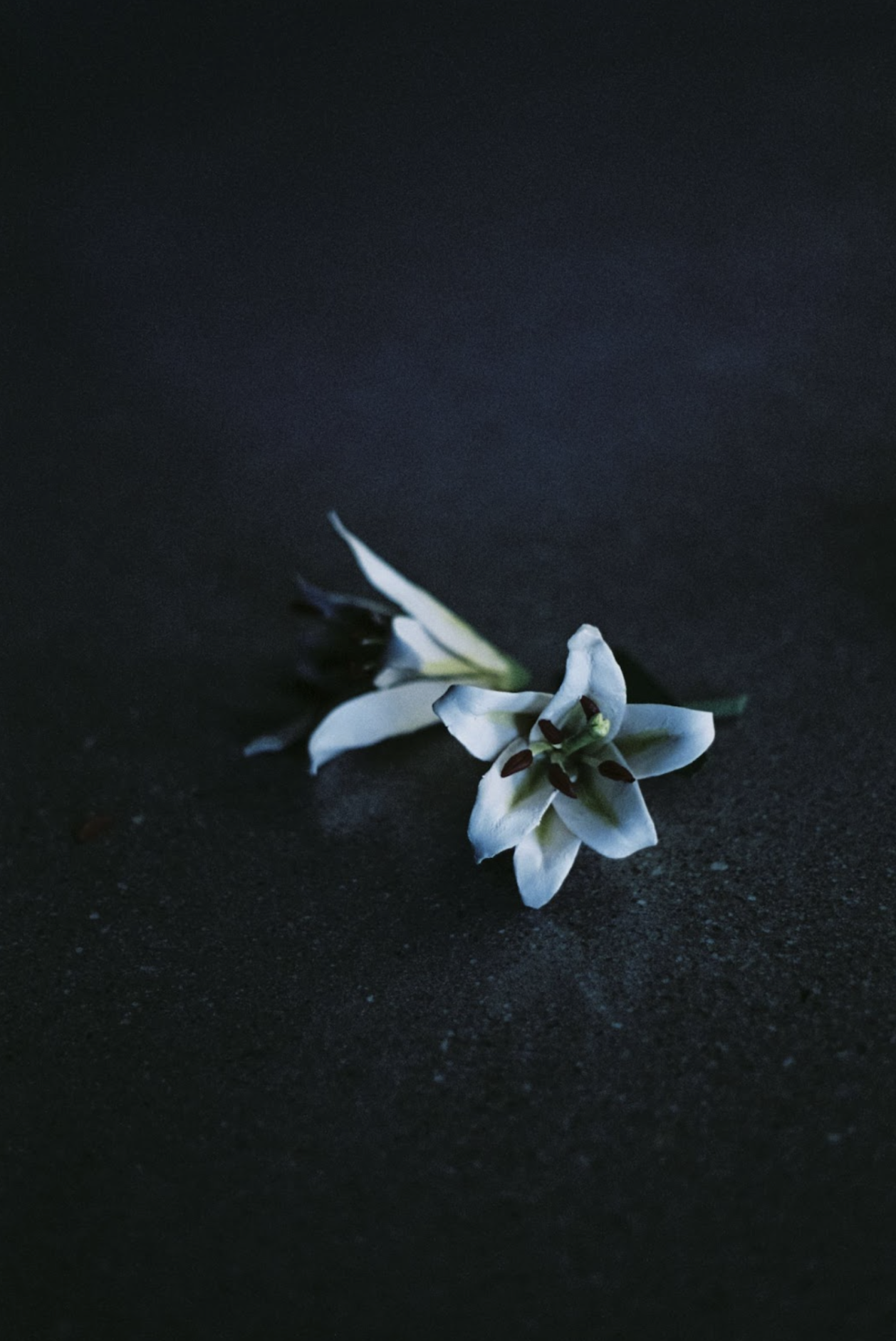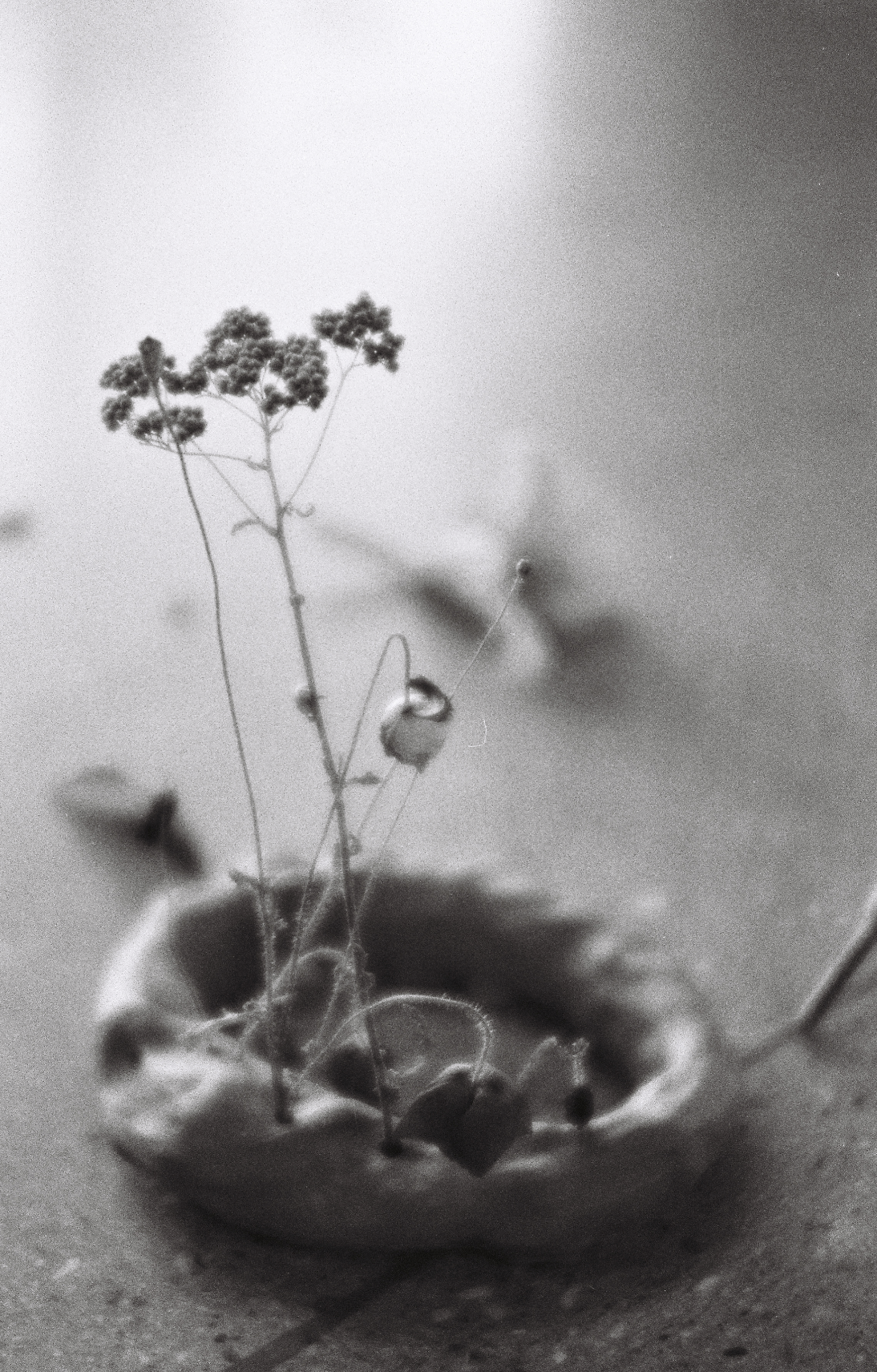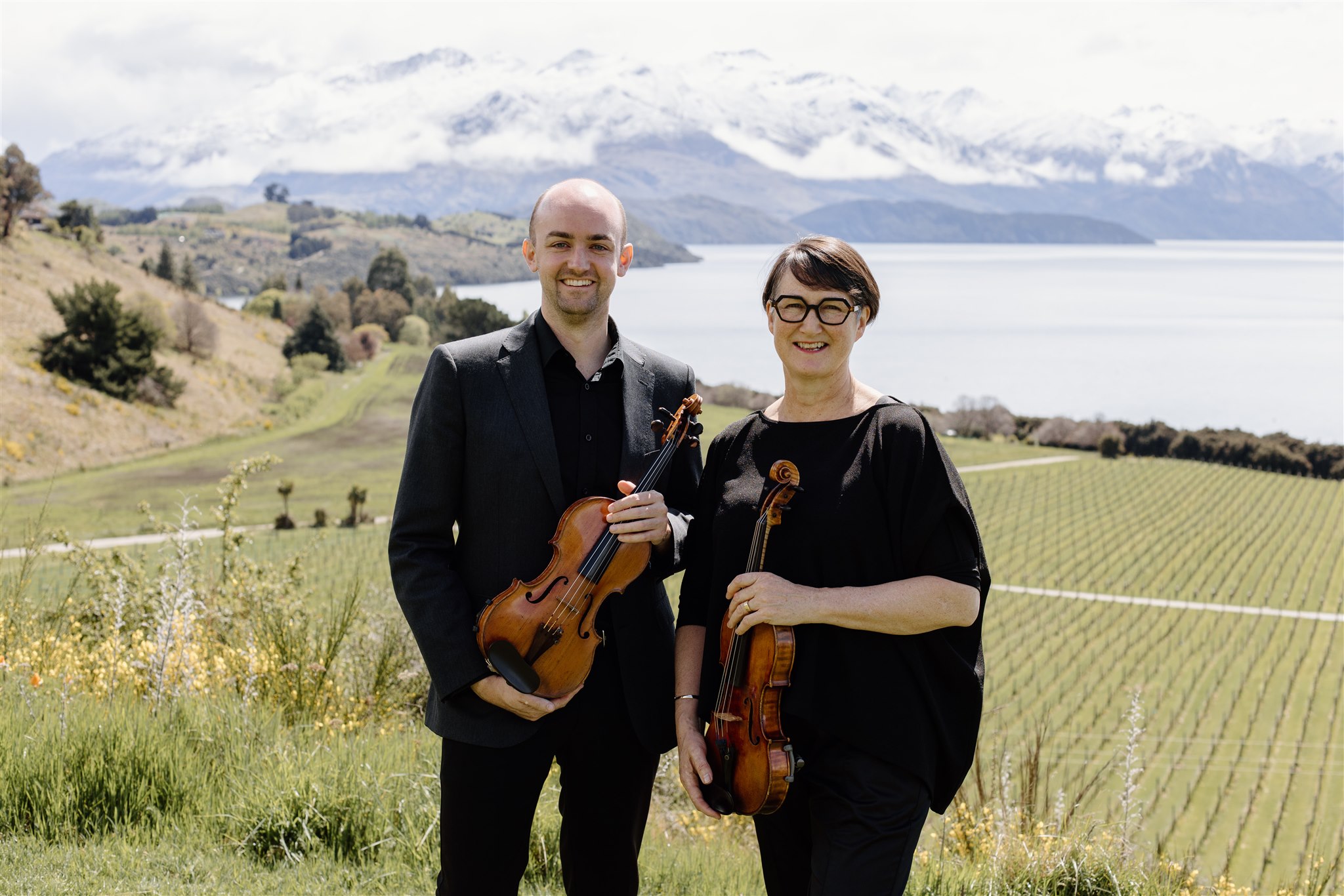Tread Carefully, Something Precious is Underfoot: Cindy Huang

An essay on Cindy Huang's exhibition written by Erin Lee. Cindy Huang's exhibition is on display from 28 January 2023 - 29 March 2023.
When excavating settlements of Chinese gold miners, the most common remnants found are ceramics. They tell the stories of these settlements and the people who lived in them. Among these fragments, it’s common to find celadon ware, porcelain ceramics that the gold miners brought with them when they travelled from China. In Cindy Huang’s latest exhibition she unearths the little known histories of Chinese gold miners in Otago and Southland. Here, porcelain takes the form of realistic lily blooms. But what do lilies have to do with gold miners?
Officially, there is no evidence to tie them together. However, over Huang’s two-week research trip, she discovered the unwritten history of the white lilies that grow wild near historic Chinese settlements. Huang spoke to fifty locals, one of whom told her that the lilies were planted by gold miners who brought them from China. They were valued for their medicinal properties; the bulb fragments were boiled and dried and eaten in a soup to treat respiratory conditions. While there are no records of the Chinese settlers bringing and planting lilies in New Zealand, archaeologist Neville Ritchie has found accounts of Chinese gold miners planting the same lilies during the gold rushes in California.
Huang was struck by this history that only survives in the memories of the communities who retell it. One of her ancestors was a gold miner in New Zealand. He was fortunate and eventually returned to his family in China. She only knows this because Huang’s mother remembers hearing stories as a child from her grandmother. Otherwise, she knows nothing about his life, not even his name. Throughout her research, Huang imagined the life her ancestor lived in New Zealand. This musing became the poem which is the title of the exhibition.
The history of Chinese gold miners in New Zealand is hard and heavy. The racism and discrimination that the gold miners faced has an enduring legacy which impacts Chinese people living in Aotearoa today. Initially, Chinese men were invited to work in the Otago gold fields– though only on land that had already been deserted by white gold miners. However, this welcome turned into resentment which then mixed with prejudice and fostered hatred. Many of the written histories focus on the traumas the Chinese gold miners suffered. They tell us their families were forbidden to join them for fear that they would pollute the young British colony. They tell us about the hundreds who died alone, buried in unmarked graves because Chinese men weren’t allowed to be buried within the walls of cemeteries.
While it is important to remember these realities, this framing of history leaves little room for stories of community and connection. Ngai Tahu kaumatua, Darren Rewi told Huang that when the remains of gold miners were repatriated to China to receive traditional burial rites in 1883 and again in 1902, it was Māori who exhumed over seven hundred bodies and prepared them for the voyage. Māori also turned to practitioners of Chinese medicine when their own Rongoā, customary healing, was outlawed by the discriminatory Tohunga Suppression Act of 1907. In a reciprocal exchange, Māori would trade medicinal native plants that they knew how to identify and harvest in return for medicine. This connection between tangata whenua, people of the land, and Chinese communities has continued through generations. Afterall, it is on their whenua, their land, that Chinese gold miners remain buried to this day.
In retracing these un-recorded stories, speculations, and anecdotes, Huang sits comfortably amongst scattered fragments. Fragments are all you have when you’re trying to piece together a history that can never be whole. Across the gallery, complete lilies sit next to others in the process of coming undone. They are nestled among pieces of lilies that are dislocated entirely. Lone stamen and isolated petals float among the debris, some of the petals appear freshly fallen, still white and crisp, while others have yellowed with time. Some of the buds are punctuated with small holes, a reminder of the fragile and brittle nature of porcelain. The curled dried bulb fragments lie next to bulbs that are sending up young shoots to become new flowers—a complete life cycle folding in on itself.
In Chinese culture, white is the colour associated with death. Blooming from and collapsing into the concrete floor of the gallery, I immediately read Huang’s white lilies as a memorial. However, it is more than just a lamentation; the lilies aren’t just flowers left at the foot of a tombstone. They are a poetic tribute to the traditions these men brought with them as they journeyed to the bottom of the Pacific. It is a testament to their knowledge of medicine and the ways in which they tried to keep themselves well enough to work and return home. Though the miners, their stories and their names are largely forgotten, their presence in Whakatipu is marked by their lilies that still bloom every summer during Chinese New Year celebrations.
This exhibition was funded by the Asia New Zealand Foundation Te Whītau Tūhono and Creative Communities New Zealand.
Text by Erin Lee
Image by Oliver Roake









.png)

